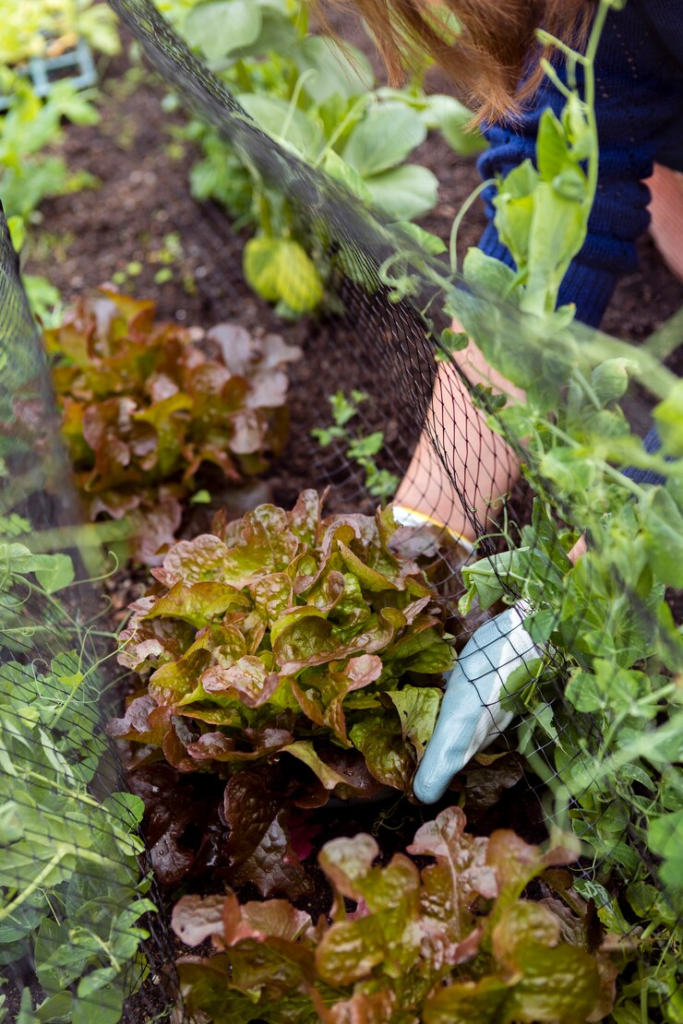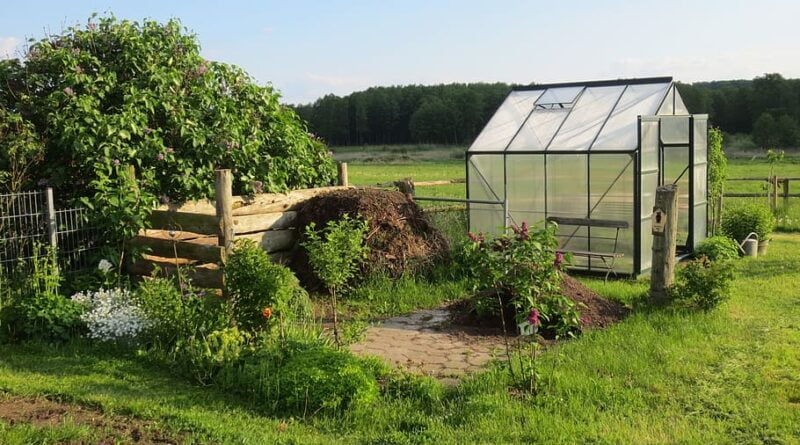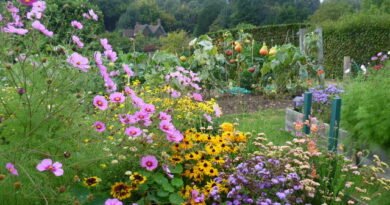What to Grow on Your Allotment: A Comprehensive Guide
Starting an allotment is an exciting journey, especially when you imagine the abundance of fresh produce you can harvest right from your plot. However, deciding what to grow can be overwhelming, particularly if you’re new to gardening. Whether you have a small plot or a larger space, thoughtful planning is key to making the most of your allotment. This guide will help you navigate the decision-making process, considering factors like plot size, climate, soil type, and your personal preferences.
Assessing Your Plot
The first step in determining what to grow is evaluating the size and characteristics of your allotment. Different plants have varying space requirements, and understanding your plot’s dimensions will help you decide on the number and type of crops you can cultivate.
Soil Quality: Understanding your soil type is crucial for selecting crops that will thrive. Conduct a simple soil test to determine its pH level and composition (sandy, clay, or loamy). Most vegetables prefer well-drained, loamy soil with a neutral pH. If your soil is poor, you might need to amend it with compost or organic matter to improve fertility.
Plot Size: Measure your allotment and consider the amount of space you want to dedicate to each crop. A small plot might be better suited for compact crops like lettuce, spinach, or radishes, whereas larger plots can accommodate sprawling plants such as pumpkins, squash, and potatoes.
Sunlight Exposure: Observe how much sunlight your plot receives throughout the day. Most vegetables require at least six hours of sunlight, so position sun-loving plants like tomatoes, peppers, and beans in the sunniest parts of your allotment. For shaded areas, consider shade-tolerant crops like leafy greens and some herbs.
Wind Exposure: Wind can significantly affect plant growth, especially for tall or delicate crops. If your allotment is exposed to strong winds, opt for sturdier plants like root vegetables or consider using windbreaks, such as hedges or fencing, to protect your crops.

Consider Your Preferences
Your personal tastes and dietary needs should play a central role in what you choose to grow. There’s no point in cultivating crops you or your family won’t enjoy eating. Here are some suggestions based on common preferences:
- Salad Enthusiasts: If fresh salads are a staple in your diet, focus on growing a variety of leafy greens such as lettuce, arugula, spinach, and kale. These crops are relatively easy to grow and can provide a continuous harvest throughout the growing season.
- Cooking Lovers: For those who love to cook with fresh ingredients, consider planting a variety of herbs like basil, parsley, thyme, and oregano. Vegetables like tomatoes, peppers, and onions are also versatile additions to your culinary garden.
- Preserving and Storing: If you’re interested in preserving or storing your harvest for winter, choose crops that store well, such as carrots, potatoes, onions, and garlic. These can be kept for months in cool, dark conditions, allowing you to enjoy homegrown produce long after the growing season ends.
- Kids and Family-Friendly Choices: Engage younger family members by growing easy-to-harvest crops like strawberries, peas, or cherry tomatoes. These plants produce quick results, making gardening an enjoyable and educational activity for children.
Climate Considerations
Understanding your local climate is vital for successful gardening. Each plant has specific temperature and moisture requirements, and planting according to your climate will ensure healthy growth and abundant harvests.
Seasonal Planting: It’s also essential to consider the growing seasons in your area. Some crops, like peas and lettuce, prefer cooler temperatures and should be planted in early spring or fall. Others, like squash and corn, require the warmth of summer to flourish.
Cool Climates: If you live in a cooler region, focus on growing hardy vegetables that can withstand lower temperatures. Root vegetables like carrots, beets, and parsnips, as well as leafy greens such as cabbage and kale, are excellent choices. These crops can often be sown early in the spring or late in the summer for a fall harvest.
Warm Climates: For those in warmer areas, choose heat-tolerant plants that thrive in full sun and high temperatures. Tomatoes, peppers, beans, and eggplants are classic warm-season crops. Additionally, you can experiment with tropical or Mediterranean plants like sweet potatoes or okra.

Maintenance and Care Requirements
Different crops require varying levels of care, so it’s important to consider how much time and effort you can realistically dedicate to your allotment.
- Low-Maintenance Options: If you have limited time, opt for low-maintenance crops like radishes, beans, or zucchini. These plants generally require minimal care and can thrive with basic watering and occasional weeding.
- High-Maintenance Crops: On the other hand, some vegetables, such as tomatoes, cucumbers, and squash, may require more attention. They often need regular watering, pruning, staking, and pest management. If you’re up for the challenge, these crops can be highly rewarding, producing bountiful harvests with proper care.
- Succession Planting: To maximize your yield, consider succession planting, which involves planting new crops in the same space once the first crop has been harvested. This technique is particularly useful for fast-growing vegetables like lettuce and radishes, allowing you to enjoy multiple harvests from a single plot.
Harvest and Storage Planning
When choosing what to grow, think ahead to the harvest and how you’ll store your produce. Some crops provide a continuous harvest, while others mature all at once, requiring timely picking and storage.
Freezing and Canning: For those interested in preserving their harvest, consider growing crops that are suitable for freezing or canning. Tomatoes, peas, beans, and berries can all be preserved to enjoy year-round. Learning these techniques can significantly extend the life of your produce and reduce food waste.
Continuous Harvest: Crops like lettuce, kale, and beans can be harvested multiple times throughout the season. This is ideal if you prefer to have a steady supply of fresh produce over several months.
Single Harvest: Vegetables like carrots, potatoes, and onions are typically harvested all at once. Ensure you have enough storage space, such as a cool cellar or pantry, to keep these crops fresh for extended periods.

Experimentation and Learning
Gardening is as much about learning as it is about growing. Don’t be afraid to experiment with different crops, varieties, and gardening techniques. Each season offers an opportunity to try something new, whether it’s planting a unique vegetable variety or testing out companion planting methods.
- Trying New Varieties: Explore heirloom or specialty varieties of common crops. Heirloom tomatoes, for example, come in a range of colors and flavors that you won’t find in typical grocery store varieties.
- Companion Planting: This method involves planting complementary crops together to improve growth, deter pests, and maximise space. For instance, planting marigolds among your vegetables can help repel insects, while growing beans near corn provides mutual benefits.
- Soil Health: Regularly rotating crops and adding compost or green manure to your soil will keep it healthy and productive. Healthy soil leads to stronger plants and better harvests, so consider soil improvement as an ongoing part of your gardening routine.
Enjoy the Process
Ultimately, the key to a successful allotment is enjoying the process. Gardening should be a relaxing and rewarding experience, not a source of stress. Start small, grow what you love, and gradually expand your efforts as you gain confidence and experience. Over time, your allotment will become a thriving source of fresh, homegrown food, offering both physical and mental nourishment.
Remember, there’s always something new to learn in gardening. Each season brings its challenges and rewards, and the joy of cultivating your own food is a journey worth embracing.




